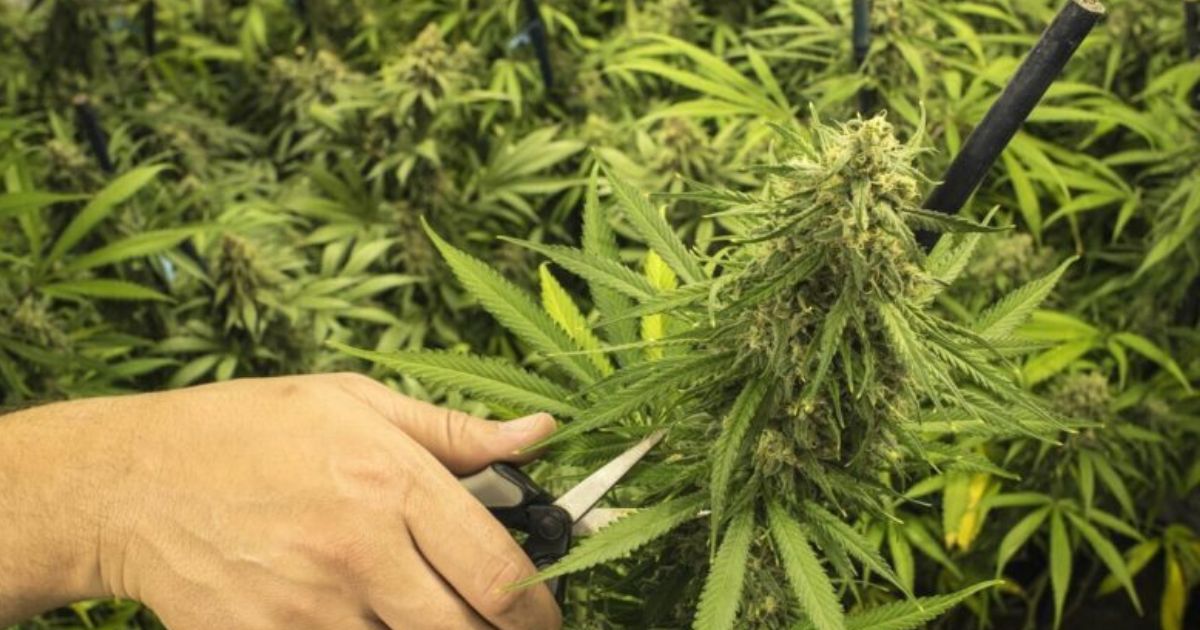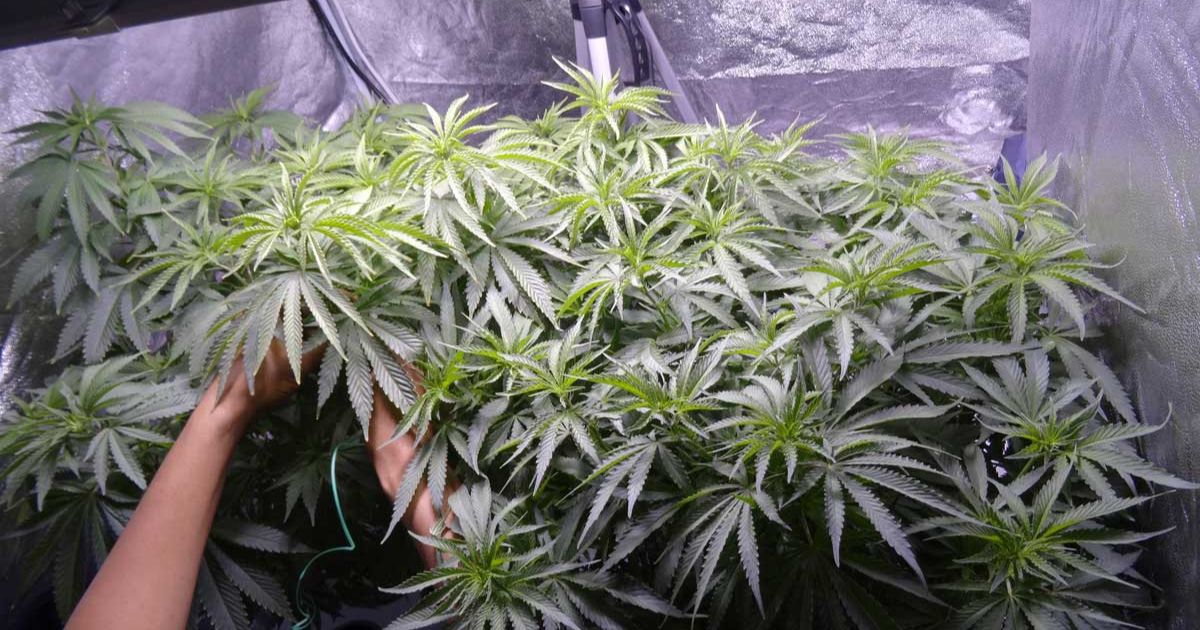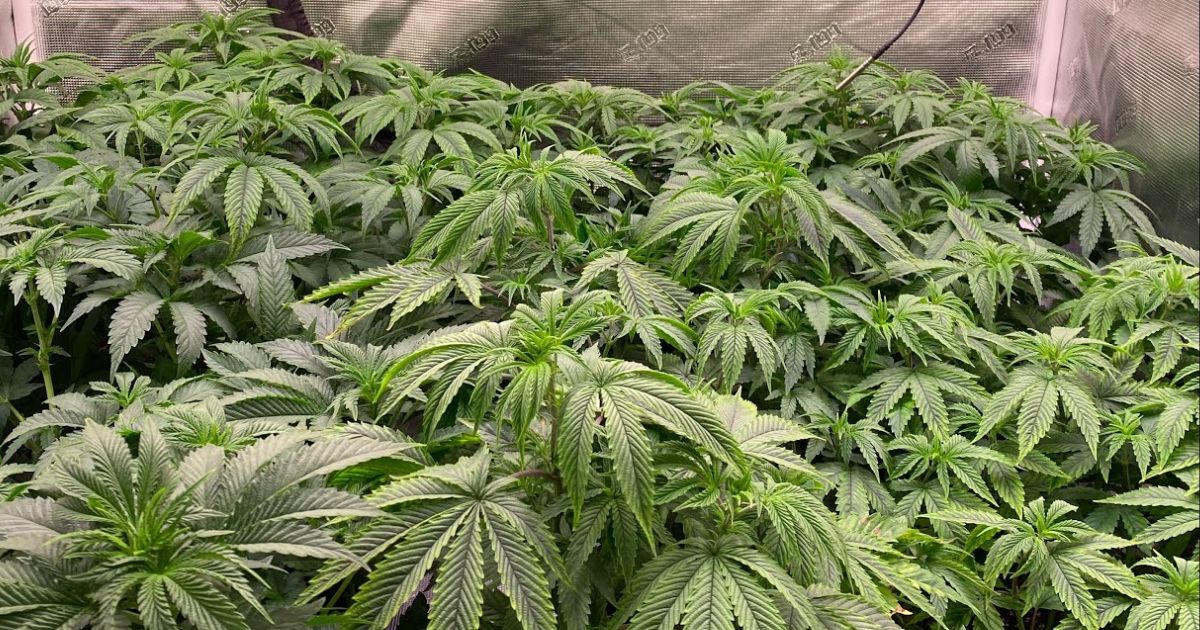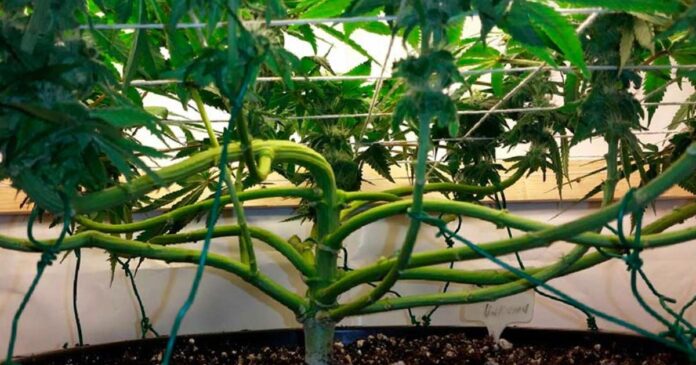Growing cannabis is more than just watering and waiting; it’s an art that combines patience, skill, and understanding of plant behaviour. One of the most effective ways to get the best out of your cannabis plants is through plant training, a set of techniques designed to control the way your plants grow. By training your cannabis plants, you can shape them to receive better light exposure, develop stronger stems, and ultimately produce bigger, more potent buds.Training isn’t just for expert growers; even beginners can learn how to guide their plants to grow in ways that optimise both space and yield. Whether you’re growing indoors under LED lights or outdoors under the sun, strategic training can turn an average plant into a powerhouse of production.
It helps balance your plant’s energy, promotes healthier growth, and prevents problems like weak branches or uneven canopy height.In this guide, we’ll break down everything you need to know about how to train cannabis plants for the perfect shape, size, and strength. From gentle low-stress methods to more advanced high-stress techniques, you’ll learn how to sculpt your plants like a pro and enjoy more substantial, healthier harvests.
Why Training Cannabis Plants Matters
Training Cannabis plant training is one of the most innovative ways to maximise your harvest without needing extra space or equipment. When left to grow naturally, cannabis plants tend to focus their energy on the main central stem, leading to a tall, uneven structure with smaller buds on the lower branches. This growth pattern limits light penetration and airflow, leaving much of the plant underdeveloped.
By training your cannabis plants, you take control of their shape and energy distribution. The goal is to create a more expansive, more even canopy, where each bud site receives equal access to light. This not only boosts yield but also improves the overall quality and density of your flowers.Proper training strengthens stems, allowing them to support heavier buds during flowering. It also promotes better airflow through the canopy, lowering the risk of pests, mould, and mildew, which are common problems in dense or overcrowded plants.

In short, training helps your cannabis plants grow stronger, healthier, and more productive. It’s a proactive technique that transforms how your plants use their resources, resulting in higher yields, better potency, and a more efficient growing setup. Whether indoors or outdoors, training is the secret to unlocking your plants’ full potential.
Understanding Cannabis Growth Patterns
Before you start training your Train weed plants, it’s essential to understand how they naturally grow. Cannabis follows a principle called apical dominance, meaning the main central stem (the “apical” bud) grows taller and faster than the side branches. This dominant growth pattern helps the plant reach light efficiently in the wild, but in a controlled grow environment, it often leads to tall, uneven plants with shaded lower buds.
Training techniques work by breaking or redirecting apical dominance, encouraging the plant to distribute energy evenly among multiple branches rather than concentrating it in a single branch. This helps create a flat, How to Get Rid of Budworms Naturally balanced canopy where every bud site receives equal light.Timing is also crucial; most training should begin during the vegetative stage, when the plant is strong enough to handle stress but still flexible for shaping. Understanding this growth behaviour is the foundation of successful cannabis training.
Types of Cannabis Training Techniques
Training cannabis plants involves several methods, each designed to shape growth, strengthen branches, and increase yields. Whether you prefer gentle techniques or more advanced, high-stress methods, the key is understanding when and how to apply them. Below are the most effective cannabis training techniques every grower should know.
Low-Stress Training (LST)
One of the simplest and safest methods is low-stress training (LST). Safest methods for beginners. Instead of cutting or damaging the plant, you gently bend and tie down branches to encourage horizontal growth. This method spreads the canopy evenly, allowing light to reach all bud sites equally.
How to do it:
- Start when your plant is young (3–4 nodes tall).
- Gently bend the main stem to the side and secure it with soft ties or garden wire.
- As new branches grow upward, मन्मथ रस टैबलेट के फायदे continue bending and tying them to create a circular or flat canopy.
Benefits:
- No significant stress or long recovery time.
- Boosts light penetration and airflow.
- Keeps plants shorter, ideal for indoor or tent grows.
Avoid:
- Bending too hard or too fast may snap stems.
- Using rough materials like string or wire that can cut into branches.
Redirecting growth by cutting off parts of the main stem.
- Cutting the top of the main stem above a node is known as topping. This removes apical dominance and encourages two new main colas to grow from the sides.
- Fimming: Instead of cutting the stem completely, you pinch or trim about 75% of the new growth at the top. This often results in four or more new branches, creating a bushier plant.
When to top or fim:
- During the vegetative stage, once the plant has 4–6 nodes.
Benefits:
- Creates multiple bud sites and an even canopy.
- Increases yield potential significantly.
Caution:
- Give plants a few days to recover after cutting.
- Avoid topping autoflowering strains too late, as they have limited vegetative time.
Super Cropping (High-Stress Training)

Super Cropping is a more advanced technique in which you gently crush or pinch the inner tissue of plant branches without breaking the outer skin. How to Get Clones to Root Fast This causes slight stress that strengthens the Cannabis plant shaping and promotes bushier growth.
How to do it:
- Select a flexible branch during the mid-vegetative stage.
- Gently squeeze and roll the stem between your fingers until it becomes soft, then bend it at a 90° angle.
- Support it with a tie if needed.
Benefits:
- Encourages stronger, thicker stems that can support heavier buds.
- Increases nutrient flow and canopy control.
- Boosts overall yield when done correctly.
Be careful:
- Avoid bending too hard. If the stem snaps completely, use plant tape to repair it.
- Allow time for recovery before applying other stress methods.
Screen of Green (ScrOG)
The Screen of Green (ScrOG) method uses a horizontal net or screen to train cannabis plants to grow evenly under a light source. How to Cannabis Cloning: Step-by-Step Guide for Healthy Plants This technique is perfect for indoor grows with limited space or lighting.
How to do it:
- Place a screen about 12–18 inches above the pots.
- As plants grow, they weave their branches through the screen to maintain an even canopy.
- Trim lower branches that don’t reach the screen to focus energy on top buds.
Benefits:
- Maximises light efficiency and canopy uniformity.
- Produces dense, high-quality colas.
- Excellent for maximising yields in small grow areas.
Tip:
- Combine with LST or topping for best results before flowering begins.
When to Start and Stop Training
Timing is everything when it comes to training cannabis plants. Starting too early can stunt growth, while waiting too long can make branches too stiff to bend without breaking. The ideal time to begin training is during the vegetative stage, when your plants are still young, flexible, and rapidly growing.For most strains, start training once the plant has 3 to 5 nodes and a strong root system. At this point, the stems are soft enough to bend or prune without causing significant stress. charak neo tablet uses in hindi Low-stress techniques like LST can begin early, while topping or super cropping should wait until the plant is healthy and well-established.
As your plant grows, continue adjusting ties or the canopy to maintain even light exposure. However, once the flowering stage begins, it’s best to stop training. During flowering, plants allocate energy to bud development, and additional stress can slow growth or reduce yield.The key is to let your Healthy cannabis plant growth recover fully after each training session and avoid overhandling them during flowering. A well-timed training schedule ensures your cannabis plants grow into perfectly shaped, strong, and high-yielding beauties.
Common Mistakes to Avoid
Even with the best intentions, it’s easy to make mistakes while training cannabis plants, especially for beginners. One of the most common errors is overtraining, or applying too many techniques at once. Too much bending, cutting, or stress can shock your plant, slow its growth, or even stunt it permanently.
Another frequent mistake is starting too early or too late. Training seedlings before they’re strong enough can damage fragile stems, while waiting too long makes the branches too woody and difficult to shape. Growers also often bend stems too forcefully, causing breaks that may take weeks to heal.
Neglecting aftercare is another issue; failing to monitor recovery or adjust ties as plants grow can restrict branches and cut into stems. How to Roll a Perfect Blunt Wrap Every Time Remember, training is about guiding, not forcing. Gentle handling, patience, and timing are key to helping your cannabis plants thrive safely and effectively.
Indoor vs Outdoor Training Differences
Training cannabis plants can look quite different depending on where you grow indoors or outdoors. Indoor growers often face limited space and controlled lighting, so the focus is on maximising light efficiency and keeping plants short and wide. Techniques like LST, topping, and ScrOG are ideal for indoor cultivation because they help create an even canopy under artificial lights, ensuring that every bud site receives equal light exposure.

Outdoor growers, on the other hand, benefit from natural sunlight and more vertical space. Training outdoors usually focuses on shaping plants to handle wind, sun angles, and weather conditions. Methods such as supercropping or staking help strengthen stems against wind and rain.While indoor training is all about precision and space management, outdoor training emphasises durability and natural growth patterns. Understanding these differences helps you choose the proper techniques for your growing environment and plant health.
Conclusion
Training your cannabis plants is one of the most rewarding steps in the growing process. When you use the proper methods and timing, you can transform ordinary plants into strong, high-yielding powerhouses. Whether you’re using gentle Low-Stress Training, precise topping and fimming, or advanced methods like super cropping and ScrOG, each approach helps shape your plants for better light exposure, airflow, and strength.
Remember, successful training isn’t about forcing plants to grow your way; it’s about guiding their natural potential. Be patient, observe how your plants respond, and adjust as needed. With practice and care, your cannabis garden will reward you with balanced, healthy, and productive growth.A perfectly trained plant not only looks beautiful but also performs beautifully, delivering bigger, denser buds and a smoother growing experience. Take your time, enjoy the process, and let your plants flourish under your guidance.
FAQ
When should I start training my cannabis plants?
Start training during the vegetative stage, once your plant has 3–5 nodes and a strong root system. At this stage, stems are flexible enough to bend or prune without causing significant stress.
Is Low-Stress Training (LST) better than topping for beginners?
Yes, LST is gentler and less likely to shock your plant. Topping is effective but involves cutting the plant, so beginners may prefer LST until they gain confidence.
Can I train autoflowering cannabis plants?
Yes, but be cautious. Autoflowers have a shorter vegetative phase, so heavy training can reduce yields. Stick to gentle methods like LST for the best results.
How often should I adjust plant ties?
Check ties every few days. Adjust them as plants grow to prevent cutting into stems or restricting branches. Proper adjustment ensures an even canopy and healthy growth.
Will training reduce my overall yield?
When done correctly, training increases yield by promoting light exposure and stronger bud development. Incorrect or excessive training can reduce growth, so timing and care are essential.




